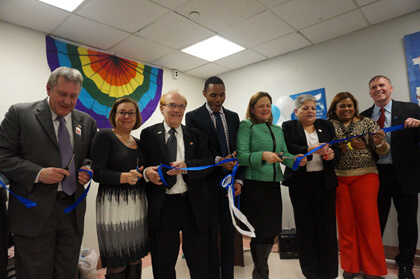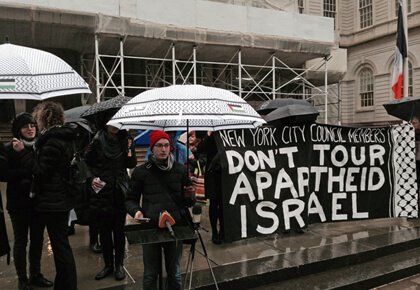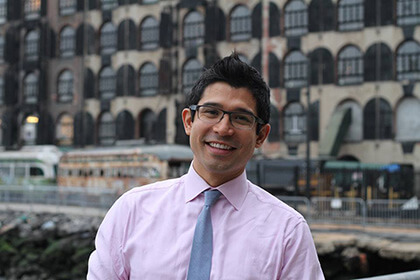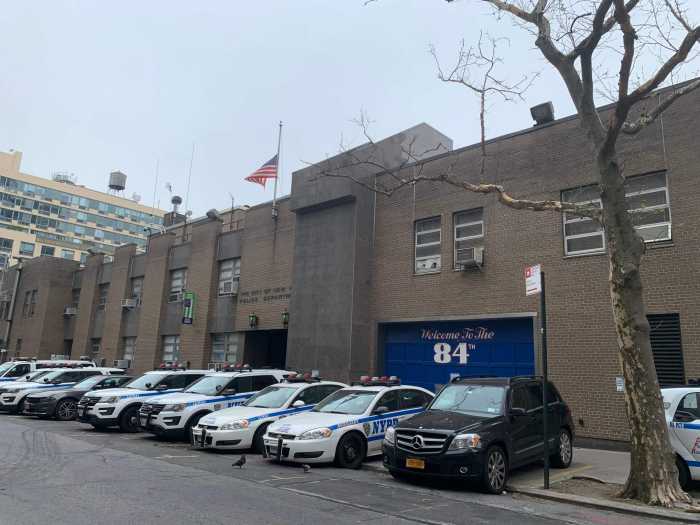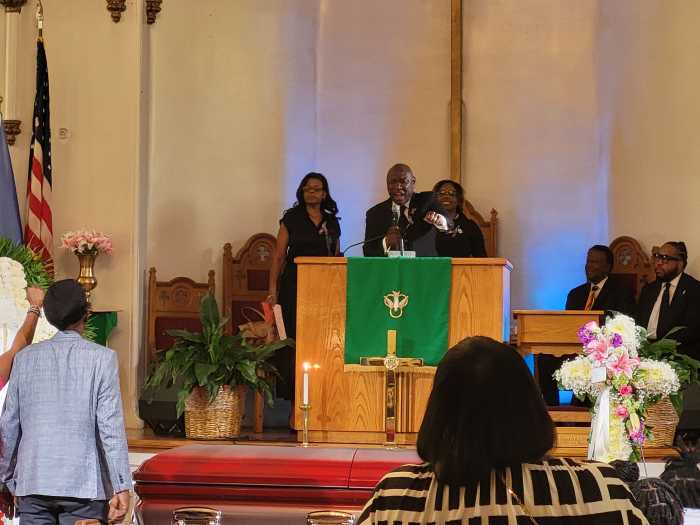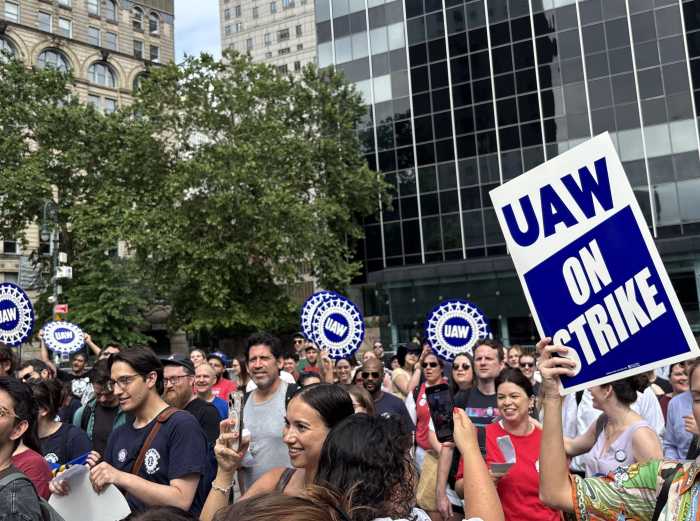 In a place as diverse as New York, it’s not always easy to make sure everyone’s voice is heard in city government. But imagine how much harder it would be if the votes of residents of some parts of the city counted more than others — if, say, your vote had 10 percent more weight if you lived in one part of town, or 10 percent less if you lived in another.
In a place as diverse as New York, it’s not always easy to make sure everyone’s voice is heard in city government. But imagine how much harder it would be if the votes of residents of some parts of the city counted more than others — if, say, your vote had 10 percent more weight if you lived in one part of town, or 10 percent less if you lived in another.
Imagine if over time, that difference grew to 20 percent, or even 30 percent.
Well, you don’t have to imagine — that’s exactly what will happen under the redistricting plan accepted earlier this month by the City Council. And, disturbingly, under the plan, the New York neighborhoods with the highest concentrations of LGBT residents are also the ones that will have their votes count the least of any part of the city.
New district from Hell’s Kitchen to West Village already the most populous, also the fastest growing
The City Council is the main vehicle by which local communities have a voice and vote in city government, serving as a balance against a mayor with strong statutory authority. Much like our State Legislature and Congress, the City Council adopts budgets (one of the largest in the nation), allocates government resources, and enacts laws — everything from civil rights protections to setting fines for parking tickets. Additionally, our City Council has final say over virtually all major land-use issues in our neighborhoods, and thus plays a big role in deciding how much development takes place in our city and where.
The Council has 51 members, and every 10 years, following the federal Census, new lines are drawn determining the boundaries of each district that gets to elect one representative.
The City Council lines for Lower Manhattan, with the new boundaries shown in black outline. | NEW YORK CITY DISTRICTING COMMISSION
How legislative district lines are drawn can have a tremendous impact on who is elected and whose interests are represented — an issue that has received a great deal of media and civic attention lately nationwide.
Manipulation of the redistricting process is largely credited with allowing Republicans to maintain a comfortable majority in the US House of Representatives in the 2012 election even though a million fewer votes were cast for GOP candidates than for Democrats.
And in the New York State Senate, Republicans have notoriously manipulated the redistricting process over the years to hold onto power. They have consistently “packed” Democratic voters into districts with the largest number of voters legally possible, thus minimizing the number of representatives they can elect, and placed Republican voters into districts with the fewest number of legally allowable voters, thus maximizing their voting power by increasing the number of districts in which they predominate.
While there doesn’t appear to be any evidence that the redistricting process for the overwhelmingly Democratic City Council was manipulated for partisan purposes, the approach employed did use some similar methods to grant greater weight and representation to residents in some parts of the city than to others.
The most dramatic example is the new 3rd Council District, containing all of Chelsea, Hell’s Kitchen, and the West Village, as well as some surrounding areas. Under the redistricting, the 3rd will have a population of 168,556 — the most of any of the 51 Council districts in the city. According to both reputation and Census data, this district has by far the city’s highest concentration of LGBT residents, as well as being in many ways the heart of New York’s LGBT community.
By contrast, under the same plan, the new 51st Council District on the South Shore of Staten Island would have a mere 153,553 residents; the new 11th Council District in the northwest Bronx would have just 153,044 residents; and the new 23rd Council District in northeastern Queens would be the least populous in the entire city, with just 152,767 residents.
And yet each of these districts would be allotted one seat, and therefore get one vote, on the City Council. While 152,767 people gets you one seat on the City Council in northeastern Queens, it only gets you about nine-tenths of a seat on the West Side of Manhattan, requiring an additional 16,000 people to qualify for a City Council representative. This means that for each resident of Chelsea, the West Village, or Hell’s Kitchen, their vote for City Council has about 10 percent less impact, and gets 10 percent less representation, than it does in northeastern Queens, southern Staten Island, or the northwest Bronx.
How is this possible, one might ask, given the US Constitution’s guarantee of one person-one vote?
The City Charter does allow a maximum deviation of 10 percent between the most populous and least populous of City Council districts. The Charter also says that Council district boundaries should be compact, keep “communities of interest” intact, and where possible avoid crossing borough lines. Acknowledging that there might be cases where achieving this would be difficult or impossible with 51 districts of the exact same number of residents, the Charter allows the wiggle room for deviation to reach these goals.
However, none of these goals appear to be served by “packing” the 3rd Council District with so many people, while drawing the boundaries of some other districts, such as the 23rd and the 51st, to make them so relatively unpopulated — and therefore, relatively speaking, so overrepresented. A glance at the City Council redistricting map shows that these new districts follow a crazy patchwork of lines that reflect no inviolable natural or demographic boundaries, and thus offer no rational justification for some districts being so much more “packed” than others.
But perhaps even more disconcerting than the effect this plan has on the voting power of residents of Chelsea, Hell’s Kitchen, and the West Village now is the impact it will have over the next decade, until the next redistricting takes place.
Over the last 10 years, these neighborhoods collectively had the highest population growth rates of any in the city, due in large part to enormous amounts of new residential construction in Chelsea, along the Greenwich Village waterfront, on West 42nd Street, and in Hell’s Kitchen South.
This substantially higher population growth rate (about 15 percent overall in these neighborhoods in the 2010 census, as compared to about two percent for the rest of the city) can reasonably be expected to continue over the decade until the next redistricting. Why? Ironically, because of actions taken by the very same City Council that approved this redistricting plan — rezonings of the Hudson Rail Yards, West Chelsea, southern and western Hell’s Kitchen, Hudson Square, and the former St. Vincent’s Hospital site in the West Village. All are located within the 3rd Council District, and taken together will result in the construction of thousands and thousands of new apartments.
This means that before the next redistricting comes around, the 3rd Council District may well have 20 percent, or even 30 percent more residents than other Council districts in the city, and yet will still have the same one vote. Its residents would then have 20 to 30 percent less voting power, or 20 to 30 percent less representation in the City Council, than their counterparts elsewhere in the city.
To be clear, redistricting cannot and should not be based on predictions of what populations will be like in 10 years; if they were, you can only imagine what kind of additional manipulation of the system might take place. However, the very reasonable expectation that the 3rd Council District will continue to grow at a much faster rate than the rest of the city provides all the more compelling case for why it should not be the most packed of all the city’s 51 districts. It’s particularly unfair to disadvantage one area of the city so markedly in terms of voting power when it’s quite likely that over the next 10 years that imbalance will only grow dramatically — more so than in any other part of the city.
With the City Council’s approval of the redistricting plan in early March, the only thing standing in the way of implementation is Justice Department review. Unfortunately, the Voting Rights Act does not recognize the LGBT community as a protected class. Therefore, while this plan would clearly disproportionately diminish the voting power of LGBT New Yorkers, by making the area of the city with far and away the highest proportion of LGBT residents also the area with the lowest voting power, we are unlikely to find any relief from the federal government.
This is an issue the Redistricting Commission (appointed by the City Council and the mayor) and the Council itself, which ultimately accepted these lines, should have been cognizant of. No area of the city, and none of its residents, should be put at such a structural disadvantage by the redistricting process. And that’s especially true of a community that has suffered the sort of historical and contemporary discrimination and marginalization that the LGBT community has.



